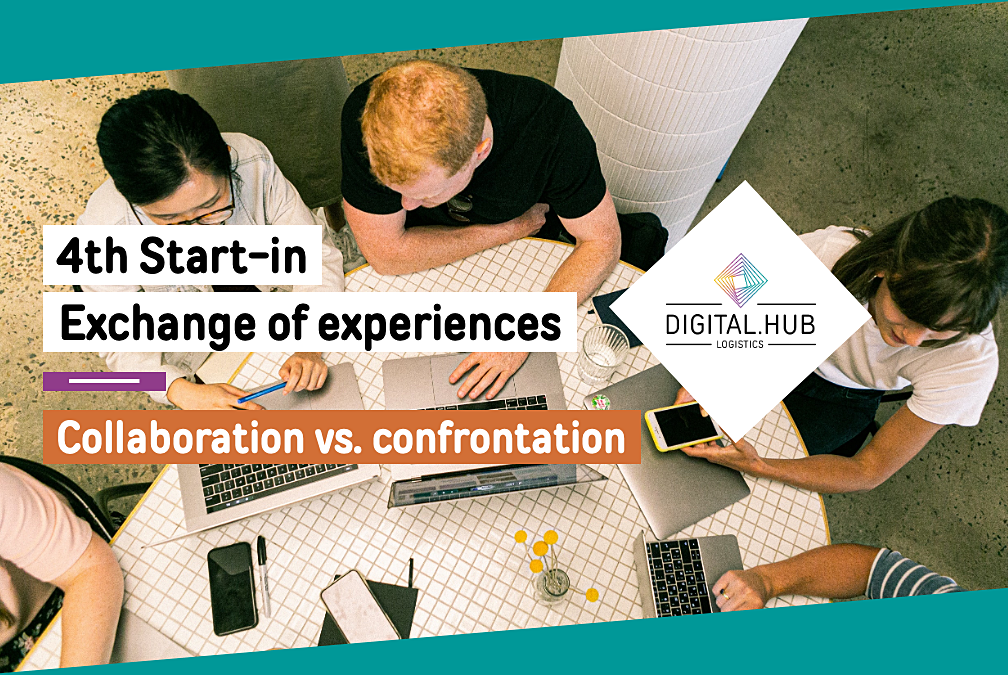
Collaboration vs. confrontation: Innovation teams discuss cooperation within the company
The question of how innovation teams can best place their ideas and developments in their companies was now discussed by the participants of the 4th Start-in Exchange of Experiences of the Digital Hub Logistics. Transparency and communication are among the success factors – but is this how you get the “tanker” turned around?
Around a dozen participants from start-ins and innovation teams from SMEs and corporations took the opportunity to gain insights into innovation structures across industry and company boundaries in the online event – as usual constructively, openly and at eye level. The topic here was specifically “Collaboration vs. confrontation – How does collaboration with the parent company succeed?”. In two keynote presentations, the speakers – managers of innovation teams – provided insights into practice. It became clear that trusting cooperation is essential, but conflicts must also be endured and dealt with. In the ensuing discussion, the participants identified transparency and communication as success factors for the balancing act between collaboration and confrontation. Some of the participants also said that stamina and a thick skin were helpful.
But how far must and how far can transparency go? There was no clear answer to this question. In the experience of many innovation managers, it is important to communicate openly at headquarters what the innovation team is working on, but not to promise too much – so that the sales department does not start presenting a prototype as a finished product to potential customers. Particularly with product innovations that cost customers something, it is therefore advisable to be more cautious than, for example, with process innovations from which customers benefit directly and which even save them money.
“Ideas live in people”
Transparency is important in any case in order to prevent the “not invented here” factor: Because what is brought to the company “from outside” – and all too often even the company’s own digital team is regarded as such – is initially viewed skeptically by many employees. Finding fellow campaigners is therefore a key factor for acceptance, because: “Ideas live in people.” Finding a person in the company who is passionate about a development of the innovation team and embraces it is half the battle.
The participants also agreed on the statement that communication is a suitable means of creating transparency. But here, too, the innovation managers had very different experiences. While some communicate more carefully inside the company than outside, others use a wide variety of channels to reach every employee in the company on their preferred channel in their preferred language – whether on an innovation platform and at a meet-up or via newsletter and podcast.
The art of turning around a tanker
The parent company as a “tanker,” the innovation team as a “speedboat”: Many innovation managers could identify with this image – and also teach examples about the art of turning around a tanker: In the best case – as one of the participants wished at the end of the round – one penetrates the entire company with the spirit and developments of the innovation team or start-in and makes oneself redundant. “Overall, the discussion once again showed how important it is to precisely define the expectations and orientations of a start-in,” said Hub Manager Maria Beck, who moderated the exchange of experiences with her colleague Christian Prasse.
The next start-in experience exchange of the Digital Hub Logistics is already being planned. Interested employees in digital and innovation teams of companies or in start-ins working start-up-like in companies are cordially invited to attend. Hub managers Maria Beck and Christian Prasse are looking forward to expanding the circle for the start-in exchange of experiences.





